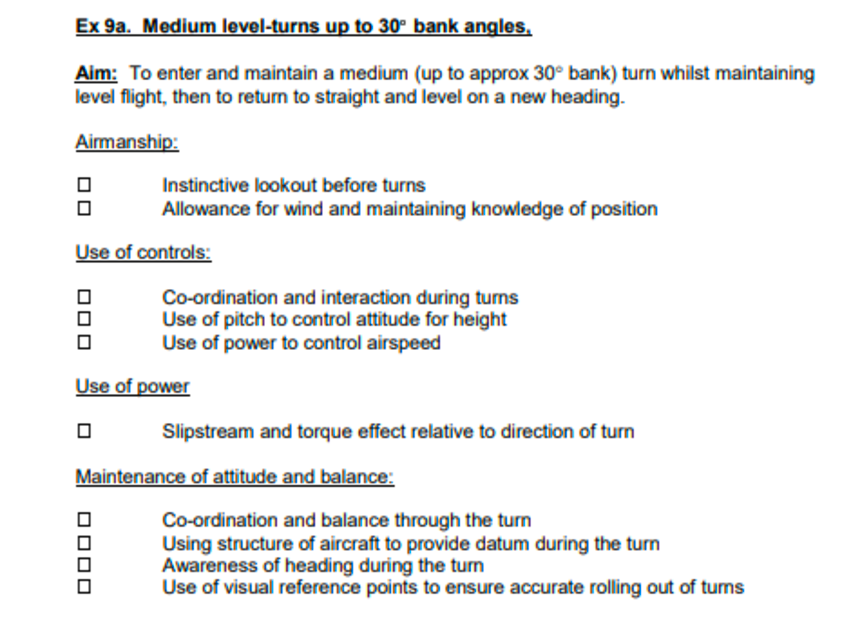So you’re on your way to becoming a pilot and showing up to the airfield whenever you can for lessons with your instructor. You love flying and can’t wait for the day you are signed off. However, are you doing everything you can to ensure you’re as prepared as you should be prior to lessons?
Be Prepared
Learning to fly is about much more than flying. Yes, flying is obviously a massive part of it, but there’s more to it than that. Ground school, exams, maps and the NPPL syllabus are all ahead of you. The latter is what this article covers.
NPPL Syllabus

NPPL syllabus excerpt
When you show up to the airfield and your instructor declares “today we will do medium level turns,” they haven’t just pulled that out of the air - they are simply following the NPPL syllabus (exercise 9a to be precise, shown above) which is published by the BMAA and available to view by anyone. Follow the link and you’ll be able to view and download the syllabus in full.
As you can see from the excerpt above, this shows the exercises & procedures involved, along with the expectations and what your instructor & examiner will be looking for. This is great information and if you study these in advance, you will be able to mentally prepare for your lessons. As well as the syllabus, the document also details hour requirements, full & restricted licences and the written exams. It’s truly an invaluable resource so print it out and keep with you at all times.
Make your instructor happy
By reviewing the syllabus, looking at what lessons you’ve done, thinking them over when you’re away from the airfield, and looking at what’s next, it will prepare you much better than simply appearing at the airfield. You will probably have noticed your instructor groan as they have to go over a lesson again and re-explain things which really, you should have been looking over outside of lessons.
Being prepared will not only help your instructor and show your dedication, but it will help you. You will know the procedures, you won’t have to re-learn them every time you step in the plane, increasing your workload and stress levels. It will also be less frustrating for your instructor who knows they’ve already shown you this several times. Another great benefit to all of this is that it results in less time on the ground re-learning, and more in the air!
Read the text book
By the time I did my first trial lesson I had already read several chapters of the Microlight Pilots Handbook. This amazing tome is the microlighters’ only required reading. Read it, know it and ask your instructor questions. It’s actually very easy to read and quite interesting. As I had read this in advance, on my first trial lesson I was able to discuss some things I wasn’t sure about and double check my understanding of others. The instructor seemed to really appreciate this. This is how it should be, I think, as they shouldn’t have to sit you down and read it to you - this isn’t nursery school! (And yes, I have seen this happen!)
Wrap up
So in short; study the syllabus, read the book & upcoming lessons in advance, and go over procedures taught to you in the aircraft mentally after the fact. Even just the act of visualising the lesson and going over and over the procedures in your head is enough to vastly speed up your learning.
Another tool I used which I found incredibly useful was a flight simulator. Expect another article on the benefits (and some draw backs) of using one.